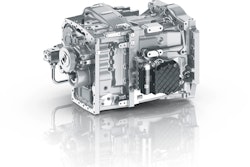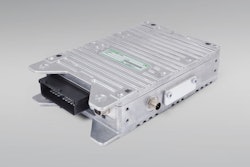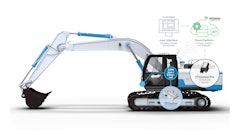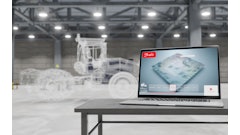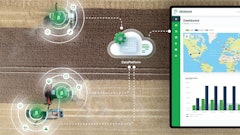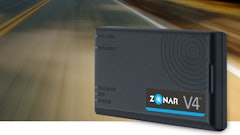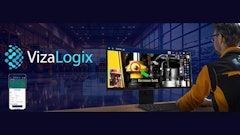Using telematics services optimizes fleet management and increases profitability, safety and schedule reliability in road haulage. There is a large selection of services based on digital communications technology. The problem: Transportation companies that want to exploit the advantages this technology offers have to navigate a market that is growing quickly and is unstructured and confusing. A variety of suppliers are developing very diverse telematics services. Most of them work with closed, so-called proprietary systems that are only designed for their own applications. The result: If a company wants to access different services or if it has vehicles from different manufacturers in its fleet, due to the lack of a uniform technical standard it has to invest in several separate telematics systems. Every time the existing telematics portfolio is expanded, investments in additional systems are necessary, a flaw that drives up the costs, the number of hardware components in the vehicles, and the number of software programs that need to be administered. What is needed is a vendor-independent telematics platform that makes both hardware and software available for any kind of telematics application.
A platform for all telematics applications
Openmatics offers a telematics platform that accomplishes that. The open and thus vendor-neutral system offered by this subsidiary of ZF Friedrichshafen AG consists of four core components: An on-board unit in the vehicle including a display interface, a web portal for displaying the data, a web shop in which telematics services from various vendors are offered in a uniform app architecture, and the apps, both its own and those of third-party developers.
While closed systems require installing multiple onboard units in the vehicle depending on the telematics applications desired, Openmatics' open system gets by with a single onboard unit. It is equipped with three independent processors for secure, fast and powerful performance, supports a great variety of communications protocols, and, thanks to its numerous interfaces, can gather vehicle data for a large number of telematics applications desired by the user. Converting and submitting the data gathered takes place on a central remote server.
The user can access the data relevant for their work via a web portal on a computer and send such data to the vehicle, for instance route or assignment changes. There the information is displayed on an Android display linked to the on-board unit to which standard devices on the market can connect. The server and web portal are based on Oracle technology. Data is transferred in encrypted form via 2G, 3G or 4G without a time delay, or at a time specified by the user.
The final, decisive advantage for telematics users is the fact that open telematics platforms like Openmatics carry ideas from the world of table and smartphone apps over to telematics services. Since all applications can be offered as modular and freely combinable software applications, independent of the vendor, a transportation company can adapt its telematics portfolio to its own specific need, change it at any time, and expand it without having to interfere with the system. Besides flexibility, this also increases the security of the company's investment. With Openmatics, after the one-time purchase of the on-board unit, there is a basic monthly fee for system management and the so-called base apps. Further apps are subscribed via the web shop and can be canceled on a monthly basis.
Telematics applications in app form
Openmatics' app concept, which has been developed by experts, is considered a benchmark in the telematics market. The apps have a clear basic structure. Their central components – boxlet, worklet, portlet and displet – are versatile and variable and can be used for all kinds of telematics functions. The boxlet subscribes to the vehicle data in the onboard unit relevant for the application. The worklet processes the data and saves them on the server. The portlet determines how the data are displayed graphically on the web portal, and the displet determines how they are represented on the driver's display or on monitors in the vehicle.
Openmatics gives companies or application developers who want to provide their telematics ideas in app form access to a software development kit (SDK) that can be installed in the integrated development environments Eclipse and JDeveloper. It contains tools necessary to create an app and makes it possible to program all its functional domains. With its help, high-quality apps can be created in a short time – even by transportation companies themselves or their partners if so desired, according to company- specific telematics needs.
Apps are sold through a web shop. It informs the user about all telematics applications available for the system. The apps are divided by service categories like "Fleet Management" or "Driveline and Diagnostics" and each described with their specific benefit. Transportation companies can subscribe to the telematics services they have selected through the shop and download them. The process is as follows: Once the subscription has been made in the shop, Openmatics puts the license on the user's web portal within a few minutes. From there it just has to be assigned to the relevant vehicle. The next time the vehicle's engine starts up, the download begins automatically, and the app is transferred digitally to the onboard unit in the vehicle.
Incorporating trailer telematics
Besides management of vehicle fleets, trailer telematics is an important topic for transportation services. Sensor-based application makes it possible to monitor the load conditions, temperature, humidity, etc. in trailers. This trailer system can be connected to Openmatics' open platform. Using this, shipping companies no longer need to continually switch between several software programs; instead they can keep an eye on both the vehicle and the freight via a single web portal.
The Openmatics Platform is a flexible system that is constantly growing with the number of apps. An extensive selection of telematics applications is already available today which help transportation companies optimize processes and increase their efficiency.



